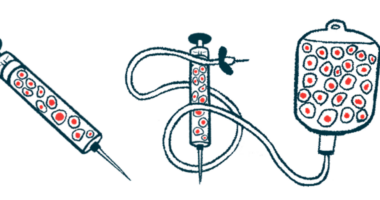NEDA 3 and 4 ‘hard to achieve’ with relapsing MS, real-world study finds
Half of center's patients reach NEDA 3 only with 6-month assessment delay

Achieving NEDA — no evidence of disease activity — after two years of treatment was not common among people with relapsing-remitting multiple sclerosis (RRMS) at a center in Italy.
NEDA more often was reached, however, when researchers didn’t include the first few months of treatment in their analysis, suggesting it may be necessary to account for the time it takes a treatment to kick in for this status to be measured accurately.
The study, “Prevalence of 2-year ‘No evidence of disease activity’ (NEDA-3 and NEDA-4) in relapsing-remitting multiple sclerosis. A real-world study,” was published in Multiple Sclerosis and Related Disorders.
NEDA-3 in MS defined as no relapses, disability worsening, and changing lesions
As treatments for MS continue to improve, being without disease activity for years at a time is increasingly considered an achievable goal.
“No evidence of disease activity (NEDA) is becoming a gold standard in the evaluation of disease modifying therapies (DMT) in relapsing-remitting multiple sclerosis,” the researchers wrote.
In clinical research, a few different definitions of “no evidence” of disease activity in MS have been proposed. One of the most common is NEDA-3, marked by a patient having no MS relapses, no worsening of disability, and no new, enlarged, or actively inflamed lesions visible on MRI scans.
A less common definition is NEDA-4. A patient achieves NEDA-4 if they meet all the criteria for NEDA-3, plus have no evidence of brain atrophy or shrinkage.
In clinical research into MS treatments, NEDA usually is calculated starting on the day a patient initiates a new treatment. But this doesn’t account for the few weeks or months that it generally takes an MS treatment to have full effect. Treatments also can alter the amount of swelling in the brain, which can particularly influence NEDA-4 readings.
Scientists in northern Italy reviewed data covering 108 RRMS patients treated at their Parma center between January 2015 and December 2018. About two-thirds were female, and the group’s average age was in the late 30s. These people had been living with MS for about six years on average.
About three-quarters of the patients were started with a first-line disease-modifying MS treatment, most commonly dimethyl fumarate (sold as Tecfidera and others) or glatiramer acetate (marketed as Copaxone and generics).
The 24 others started on second-line treatments like Gilenya (fingolimod) or Tysabri (natalizumab). These newer MS therapies generally are more potent for controlling the disease but also carry more safety risks.
35% achieve NEDA 3 two years after starting treatment, 17% reach NEDA 4
After two years of follow-up, about 1 in every 3 patients (35%) achieved NEDA-3, and about 1 out of every 6 (17%) reached NEDA-4.
“In our cohort 2-year NEDA status, especially including lack of brain atrophy, was hard to achieve,” the researchers wrote. They noted that, among patients who experienced some form of disease activity, the most common was activity on MRI scans or disease relapses. Few patients showed a notable worsening in disability scores over the study’s two years.
“Our results are consistent with previous studies showing that the loss of NEDA-3 status is mainly driven by MRI activity, much less by relapses and minimally by disability progression,” the researchers wrote.
NEDA values then were re-calculated based on disease activity assessments beginning at six months after starting treatment, rather than at the start day. In this analysis, NEDA rates were notably higher: half of these patients (50%) achieved NEDA-3, and more than a quarter (28%) attained NEDA-4.
“A larger proportion of patients achieved [six-month delay] NEDA outcomes. … These results suggest that a delayed evaluation could allow an easier and more significant achievement of NEDA,” the researchers wrote.
Patients who achieved NEDA-3, with or without a six-month assessment delay, tended to have fewer relapses in the year or two prior to starting on therapy, statistical analyses suggested. They also indicated that patients who’d been living with MS for longer were more likely to achieve NEDA-3 under measures allowing a six-month delay.
Rates of NEDA in this real-world study tended to be slightly lower for patients given second-line treatments than those given first-line therapies. This is probably because patients more likely to be prescribed these potent therapies also were those likely to have more aggressive disease, the researchers said.
“Paradoxically … lower efficacy drugs seem to perform better than second line treatments in the achievement of NEDA. … This discrepancy may be explained by the small size of our sample (only 24 patients were taking high efficacy DMT) and by a particularly elevated inflammatory disease activity of patients assuming high efficacy drugs,” the researchers wrote.
The scientists highlighted a need for further research into how best to use NEDA measurements to assess treatment efficacy and predict patients’ long-term outcomes.







